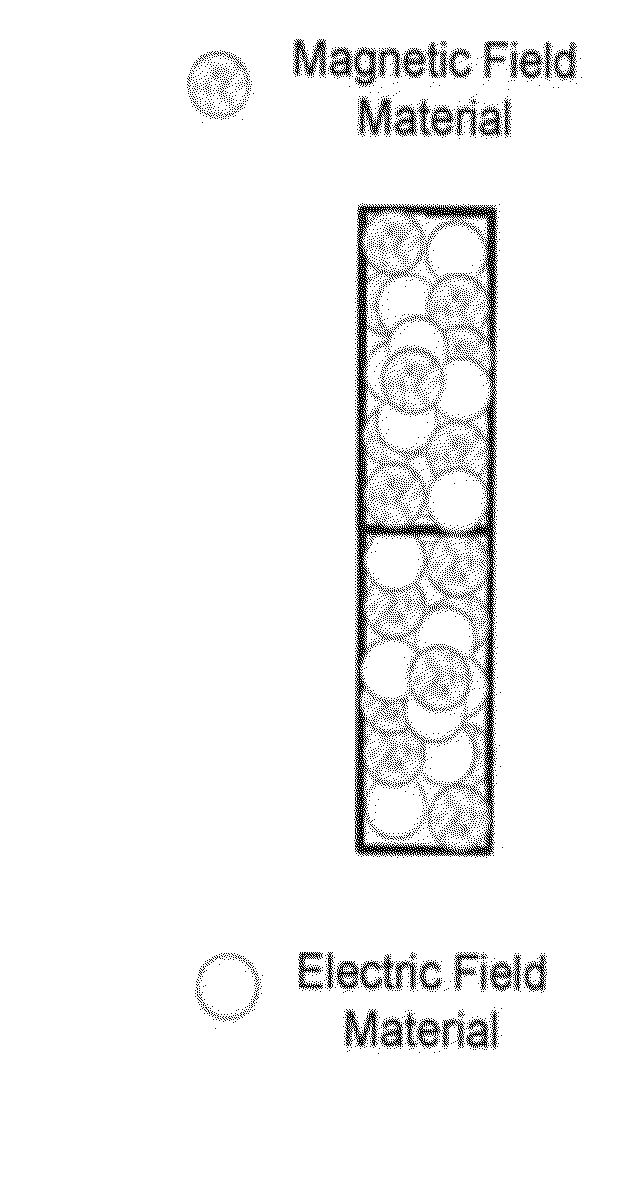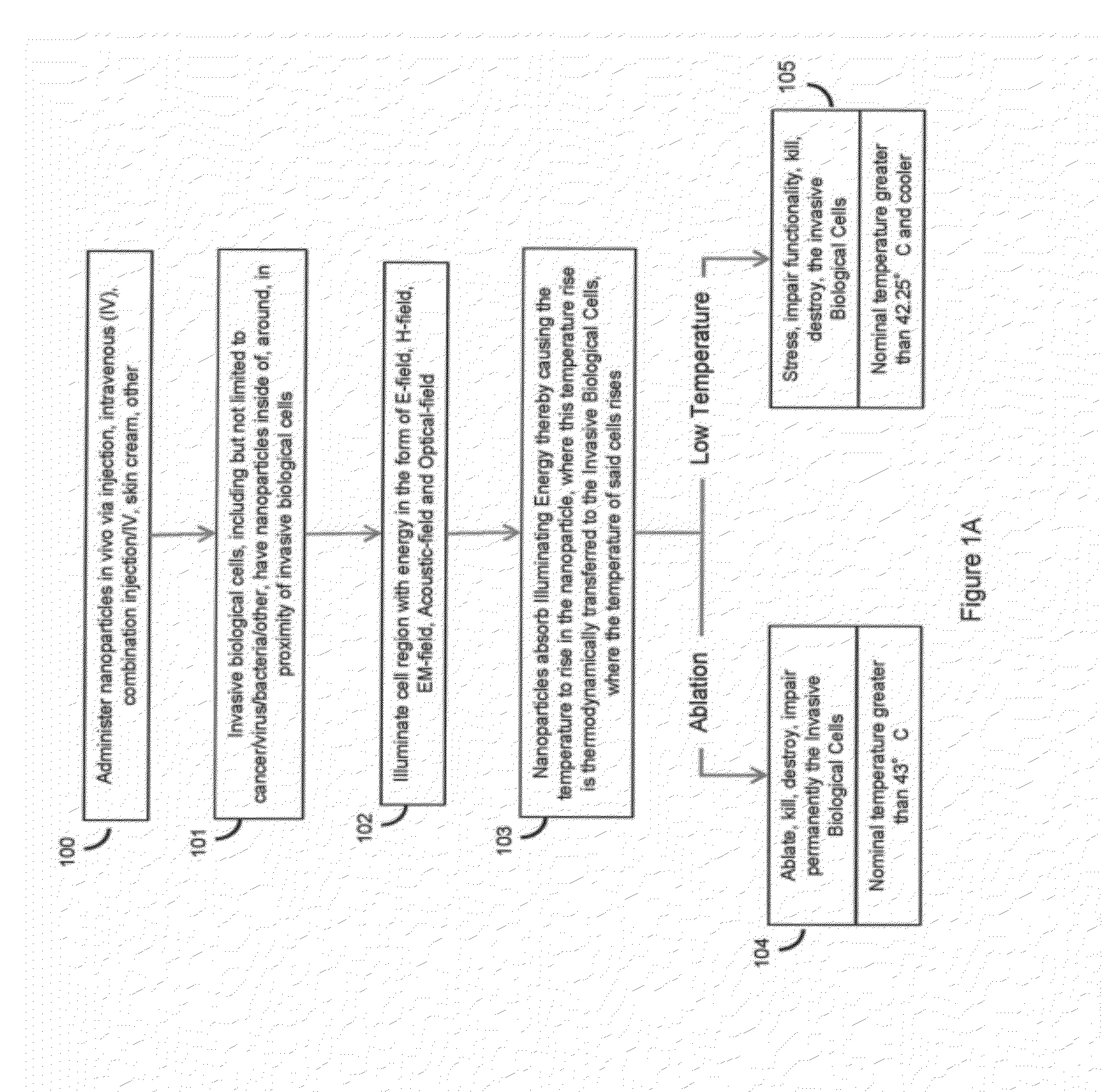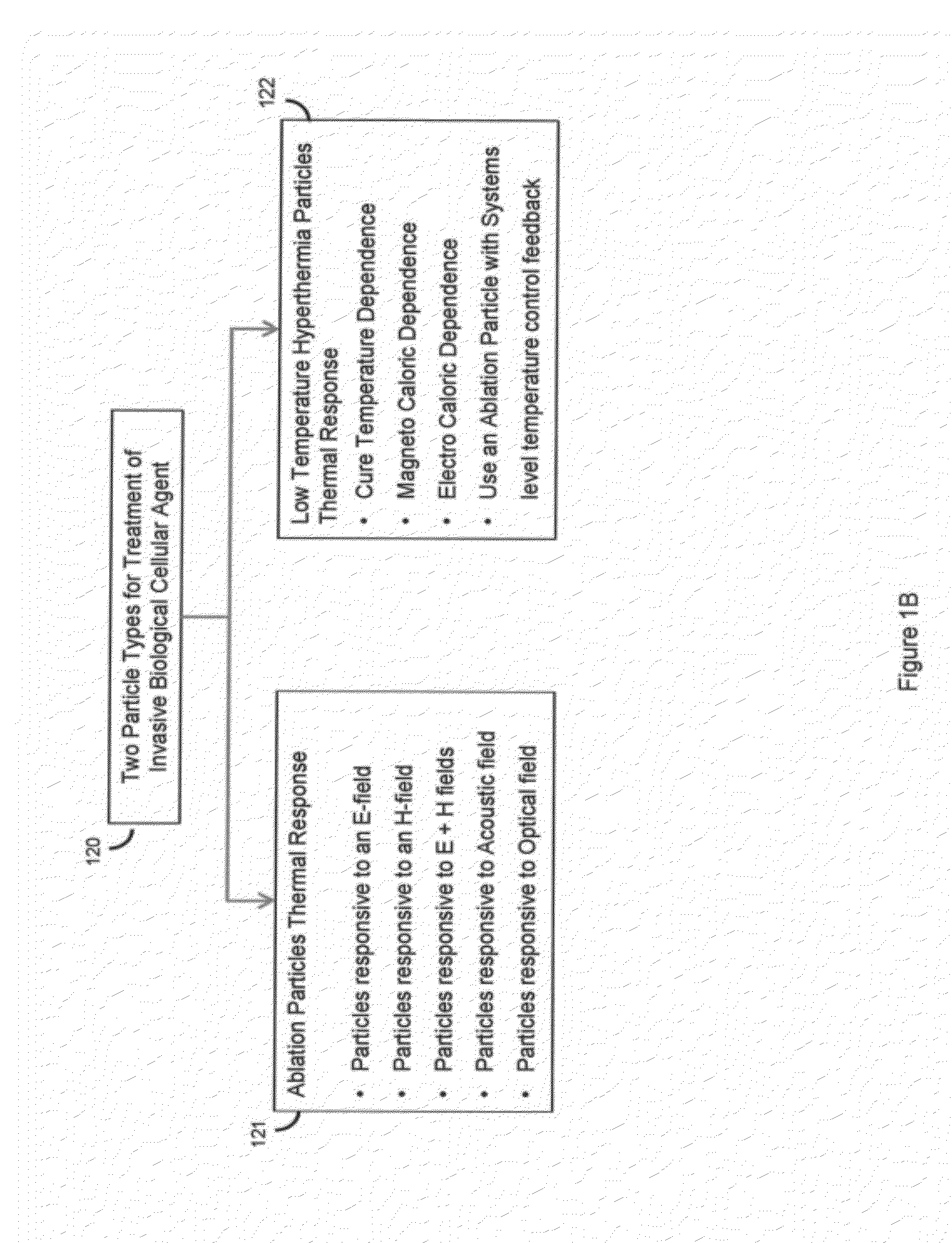System for defining energy field characteristics to illuminate nano-particles used to treat invasive agents
a technology of energy field characteristics and nanoparticles, applied in electrotherapy, surgery, therapy, etc., can solve the problems of no procedure that can be used to accurately detect the presence of cancer cells in living organisms, reach a level of maturity, damage to living organisms, etc., and achieve high degree of accuracy
- Summary
- Abstract
- Description
- Claims
- Application Information
AI Technical Summary
Benefits of technology
Problems solved by technology
Method used
Image
Examples
Embodiment Construction
[0052]FIG. 21 illustrates, in block diagram form, the typical architecture of Energy Field and Target Correlation System 2100 as used with a specific instance of a living organism 2110. In operation, the target portion of the living organism 2110 is populated with target particles of a predetermined type or types. This population of target particles could be delivered in a variety of fashions to include, but not limited to: intravenous delivery, injected delivery, a skin cream and the like. The target particles themselves can take on at least two generic forms of delivery after initial administration: active and passive. Active delivery particles are particles which are selectively taken up by the invasive agent or cancer cells because of a preferred antigen (or other substance), while passive particles use their shape, size, or physical configuration to be selectively taken up by the cancer cells. Alternatively, it is possible for all cell types, healthy and cancerous, to take up t...
PUM
 Login to View More
Login to View More Abstract
Description
Claims
Application Information
 Login to View More
Login to View More - R&D
- Intellectual Property
- Life Sciences
- Materials
- Tech Scout
- Unparalleled Data Quality
- Higher Quality Content
- 60% Fewer Hallucinations
Browse by: Latest US Patents, China's latest patents, Technical Efficacy Thesaurus, Application Domain, Technology Topic, Popular Technical Reports.
© 2025 PatSnap. All rights reserved.Legal|Privacy policy|Modern Slavery Act Transparency Statement|Sitemap|About US| Contact US: help@patsnap.com



